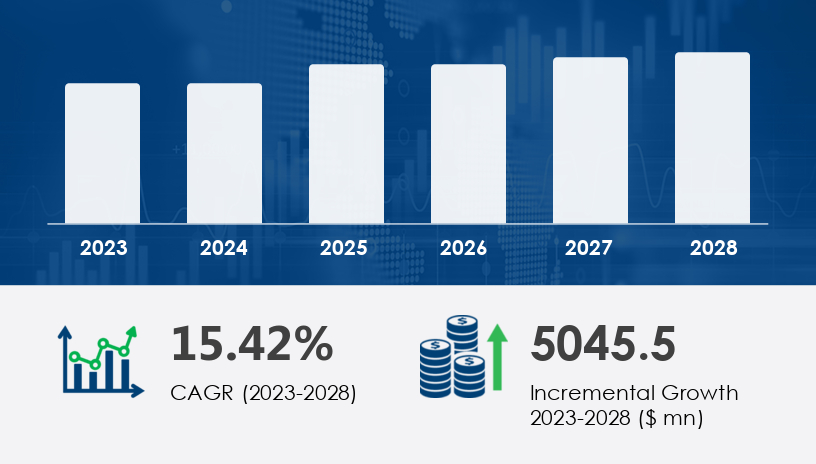The sports turf market is poised for significant growth, with projections indicating an increase of USD 5.05 billion at a CAGR of 15.42% between 2023 and 2028. This surge is driven by the escalating popularity of outdoor sports in North America, encompassing activities such as baseball, hockey, and rugby. The heightened demand for high-quality athletic surfaces is a direct response to the increasing number of athletes and sports enthusiasts seeking optimal playing surfaces. Concurrently, the advent of advanced hybrid turf solutions, combining artificial turf and natural grass, is contributing to market expansion, offering enhanced performance, durability, and cost-effectiveness compared to traditional natural grass.The growing demand for sports fields equipped with durable turf is also driving the market. Turf installation services are seeing rising demand, alongside the need for turf maintenance to ensure long-term performance. Moreover, synthetic fibers used in turf products are enhancing the overall quality and functionality of the surfaces. As concerns about water conservation grow, hybrid grass turfs are becoming more popular due to their reduced water usage compared to traditional natural grass. However, challenges persist, notably player safety concerns associated with sports turf products, including potential injury risks from hard surfaces and exposure to harmful chemicals. Addressing these issues through research and development of safer, more sustainable turf solutions will be pivotal for continued market growth in the forthcoming years

For more details about the industry, get the PDF sample report for free
The sports turf market is categorized based on type, product, and geography:
The sports turf industry is evolving with the increasing demand for artificial grass fields and advancements in hybrid turf systems that combine natural grass maintenance with modern synthetic solutions. Athletic field construction now prioritizes innovative turf installation techniques that enhance surface longevity and playability. Additionally, effective drainage systems for fields are critical in preventing waterlogging, ensuring consistent performance across various weather conditions. The development of synthetic turf fibers and improved infill materials for turf contribute to better shock absorption and durability. Industry standards emphasize turf durability standards to maintain high-quality playing conditions over extended periods. Moreover, stadium field solutions are increasingly tailored to accommodate diverse sports, including soccer pitch surfaces and football field turf, ensuring optimal performance for professional and recreational athletes alike.
Get more details by ordering the complete report
The demand for specialized rugby field design and multi-sport surfaces is driving innovation in turf maintenance equipment, ensuring extended usability and cost efficiency. Growing environmental concerns have led to a shift toward eco-friendly turf options, reducing the ecological footprint of synthetic alternatives. The industry also focuses on optimizing turf replacement cycles to balance sustainability with performance needs. Additionally, player safety turf features are being integrated to minimize injury risks and enhance comfort. Market analysts highlight turf market growth trends driven by infrastructure investments and technological advancements. The increasing adoption of high-performance turf technology supports enhanced gameplay, durability, and reduced maintenance, making it a key factor in shaping the future of sports surfaces.
Safe and Secure SSL Encrypted